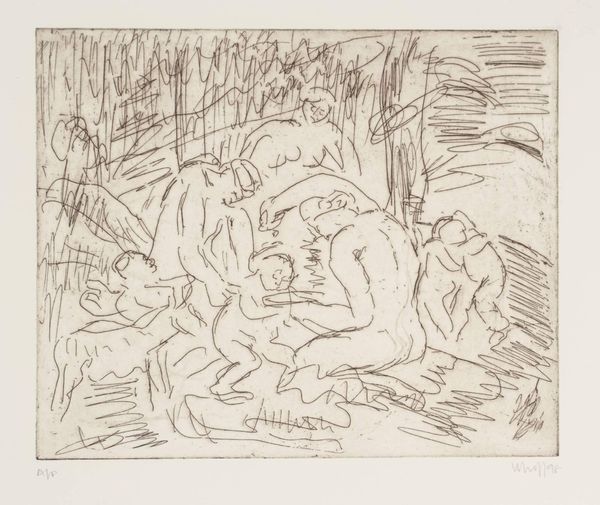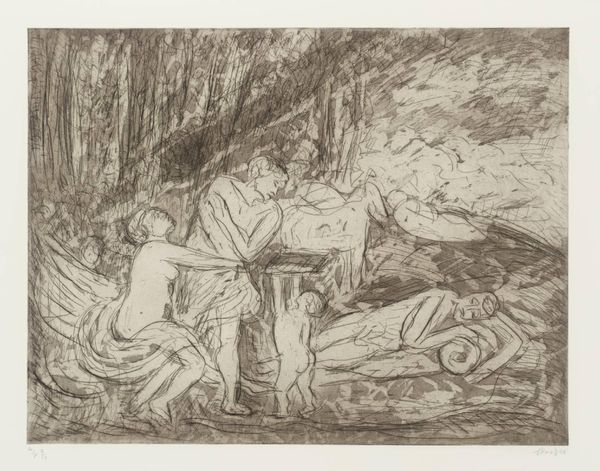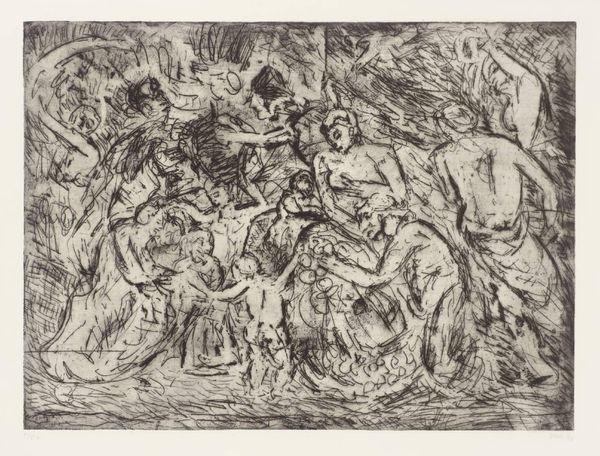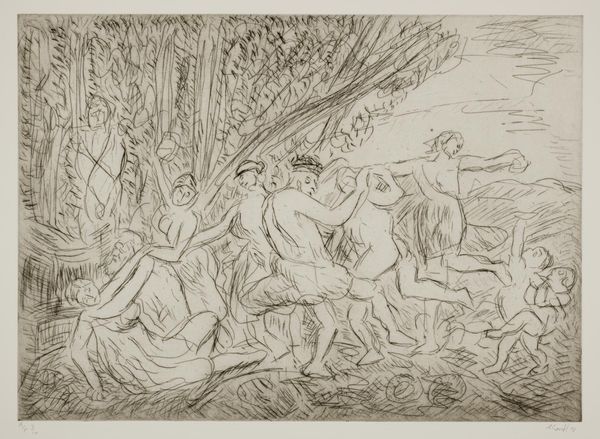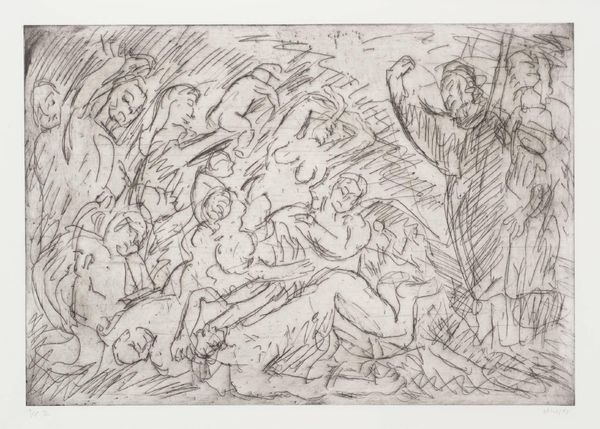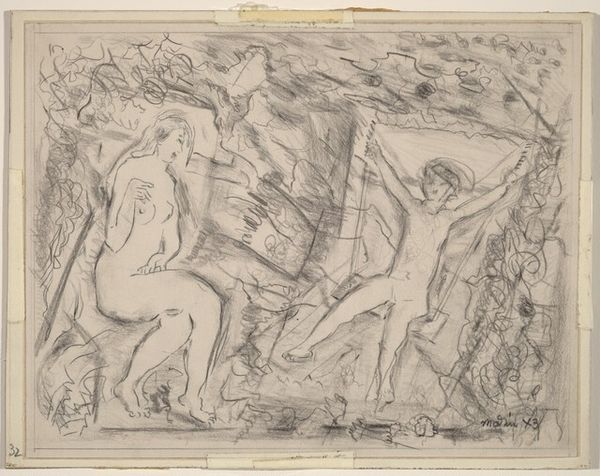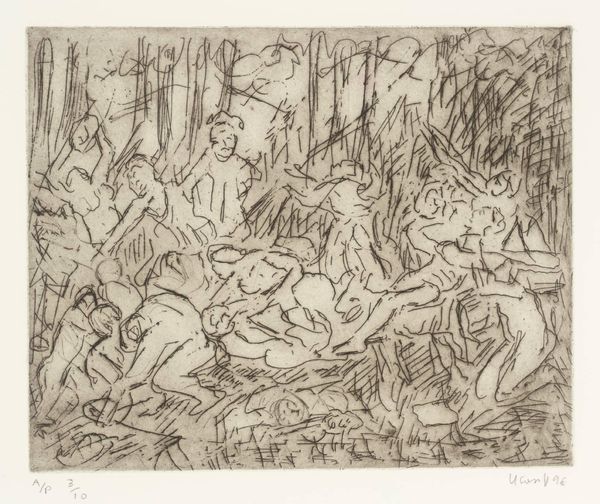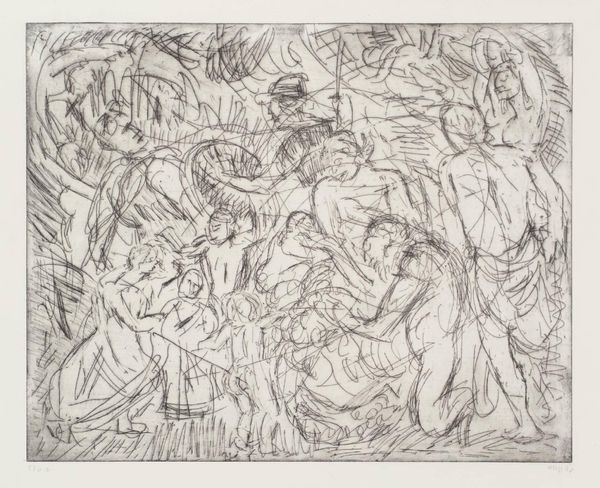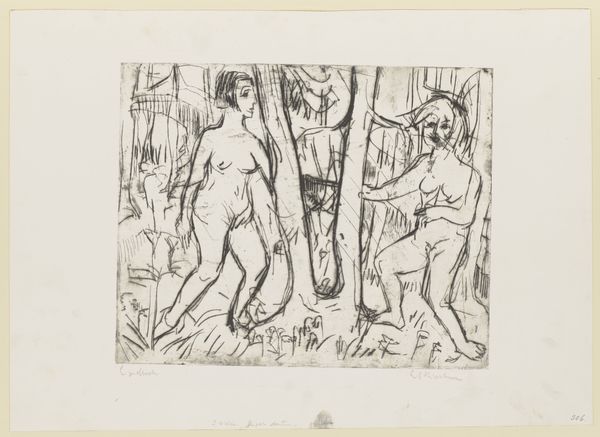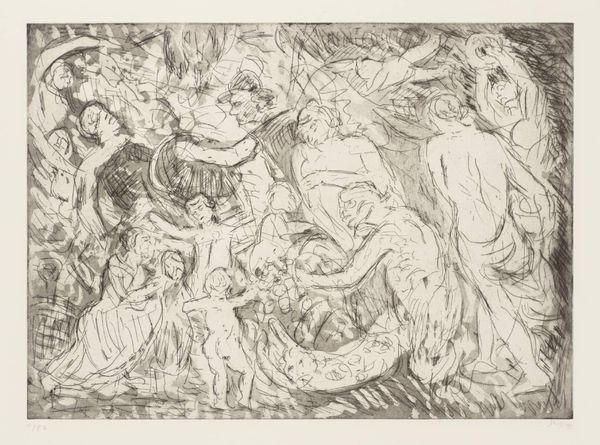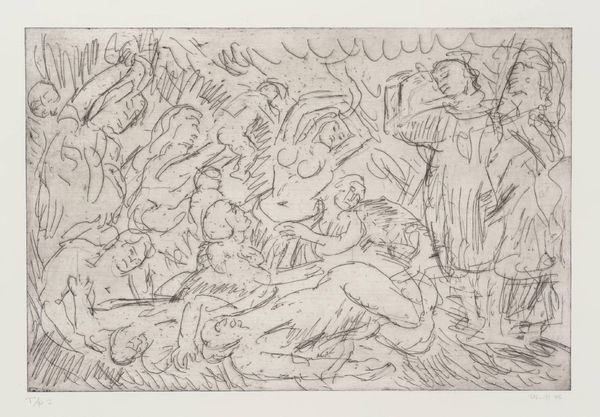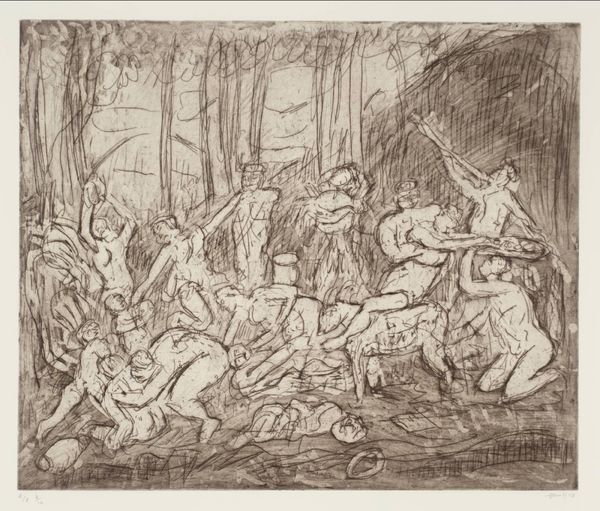
Dimensions: image: 456 x 546 mm
Copyright: © Leon Kossoff | CC-BY-NC-ND 4.0 DEED, Photo: Tate
Editor: This is Leon Kossoff's "Cephalus and Aurora (1)," an etching from the Tate collection. The loose lines almost look unfinished. What can you tell me about it? Curator: Note the aquatint ground. Kossoff's etching exemplifies a tension between classical subject matter and industrial process. How does the labor-intensive etching process affect your reading of this mythological scene? Editor: I hadn’t considered that. The contrast makes it feel more immediate, more human. Curator: Precisely! Kossoff reclaims traditional narratives, grounding them in the realities of material production and the artist's hand. Editor: That's a new way to approach classical themes; seeing the labor involved adds another layer. Curator: Indeed, the act of making informs the meaning itself.
Comments
tate 8 months ago
⋮
http://www.tate.org.uk/art/artworks/kossoff-cephalus-and-aurora-1-p11690
Join the conversation
Join millions of artists and users on Artera today and experience the ultimate creative platform.
tate 8 months ago
⋮
This print is one of many etchings executed by Leon Kossoff in response to, and literally in the presence of, oil paintings by old masters; in this case Cephalus and Aurora, 1629-30 (National Gallery, London) by Nicolas Poussin (1594-1665). Tate owns three prints by Kossoff after this Poussin painting (Tate P11690-2). The artist’s ability to explore a number of separate responses while making drawings and prints from a single subject is illustrated in these etchings. This version is printed in brown ink on white paper. It was printed in an edition of twenty with ten artist’s proofs; Tate owns number three of the artist’s proofs.
